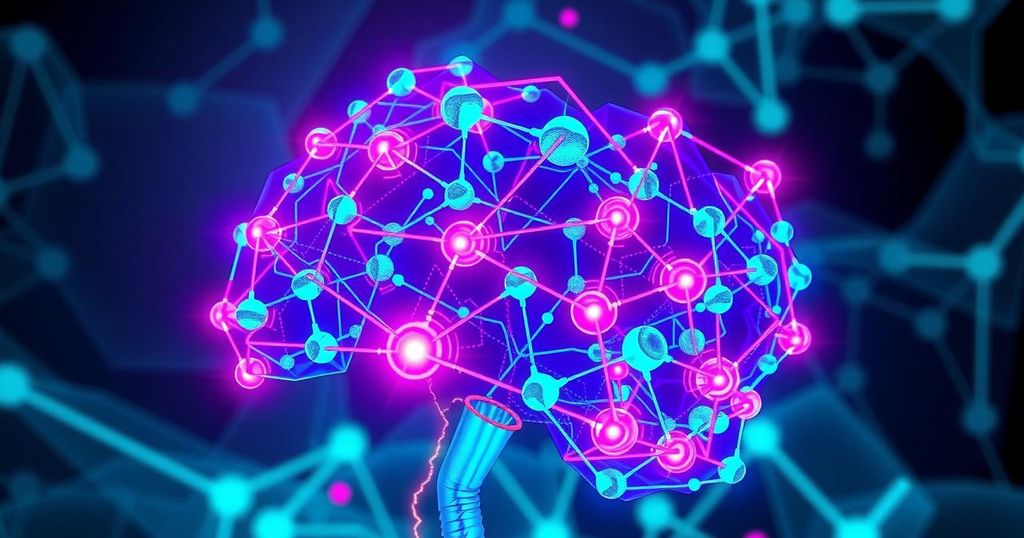AI
Science
Tech
ARTIFICIAL INTELLIGENCE, ASIA, CITY UNIVERSITY OF, CITY UNIVERSITY OF HONG KONG, DATA CENTERS, GE WANG, GEOFFREY E. HINTON, HONG KONG, JOHN J. HOPFIELD, NATURE, NEW YORK, NORTH AMERICA, POLYTECHNIC INSTITUTE, RENSSEL, RENSSELAER POLYTECHNIC INSTITUTE, SCIENCE, TECHNOLOGY, UNITED STATES, VENTURE CAPITAL
Liam Kavanagh
0 Comments
AI Is Breaking Into a Higher Dimension—Literally
- AI technology aims to mimic human brain functions for better intelligence.
- Researchers propose adding a height dimension to neural networks.
- This new dimension may create richer interactions for AI systems.
- Feedback loops and intra-layer links may enhance AI’s cognitive abilities.
- Transformers haven’t reached the goal of artificial general intelligence yet.
Redefining AI by Mimicking the Human Brain
In a bid to mimic how the human brain operates, AI technology is on the cusp of a major leap that could redefine artificial intelligence as we know it. Current systems are stuck and unable to reach the elusive goal of artificial general intelligence (AGI). What’s exciting here is that researchers believe the secret might lie in adding a new dimension to AI design—literally. This novel approach offshoots from the understanding that the human brain itself excels at complex processing in three dimensions, and now AI may be headed in that direction, too.
Introducing a New Dimension to Neural Networks
Artificial neural networks, the cornerstone of AI, are designed to emulate the function of our brain’s neural networks. These artificial constructs already have ‘width’—the number of nodes—and ‘depth,’ the layers of these nodes, but the new idea introduced by scientists from Rensselaer Polytechnic Institute and the City University of Hong Kong focuses on incorporating a ‘height’ dimension. This new approach facilitates communication among neurons in a way that nature intended, providing a more nuanced process that may bring AI systems closer to human-like intelligence. By adding height in the form of intra-layer links and feedback loops, AI could develop richer interactions, like how our brain processes information across different circuits.
Leap Toward Humanlike AI Responses
The implications of this research could be huge, not only for AI but for our understanding of human cognition itself. The past decade has seen AI mostly dominated by models like ChatGPT, which stem from groundbreaking research on transformer architectures—developed to enhance training efficiency drastically. However, these models have yet to realize the dream of creating systems that can truly think and behave like humans. Covering a growing skepticism about the old scaling laws of AI, board member Wang mentions how merely stacking more parameters isn’t the answer, calling for a structured approach that mimics natural intelligence’s complexity. Introducing feedback loops could lead to AI systems that shift from vague output to confident decision-making, almost akin to how humans arrive at insights.
AI’s Applications in Understanding Human Cognition
In a sense, this structured complexity isn’t just another complicated equation but a pathway. This potential methodology could radically change how we view intelligences—both artificial and human—by allowing us to explore how cognition and perception work in any given system. Wang and his co-author, Fan, suggest that these chemistries enable AI systems, eventually helping scientists to unravel the mysteries enveloping human cognition and neurological disorders like Alzheimer’s. The intersection between AI and insight into human brain processes is particularly intriguing and may lead to innovations we have yet to imagine.
The Future of AI: Toward Hybrid Solutions
So, what does this mean for the future? The layering of brain-like characteristics in AI systems could bring us closer to understanding our minds while also creating smarter, more efficient computational frameworks. It’s fascinating to envision a future where neuromorphic designs share the stage with digital and even quantum computing systems. Each realm brings unique solutions to age-old problems, all while uncovering more about the nature of intelligence—both human and artificial. The journey is ongoing, but the road ahead appears to be riddled with possibilities and intriguing discoveries.
This exploration into adding a new height dimension to AI systems could fundamentally change the landscape of artificial intelligence and help unravel the complexities of human cognition. The integration of intra-layer connections and feedback mechanisms reflects a more natural approach to intelligence, potentially paving the way toward artificial general intelligence while also benefiting our understanding of the human brain.




Post Comment